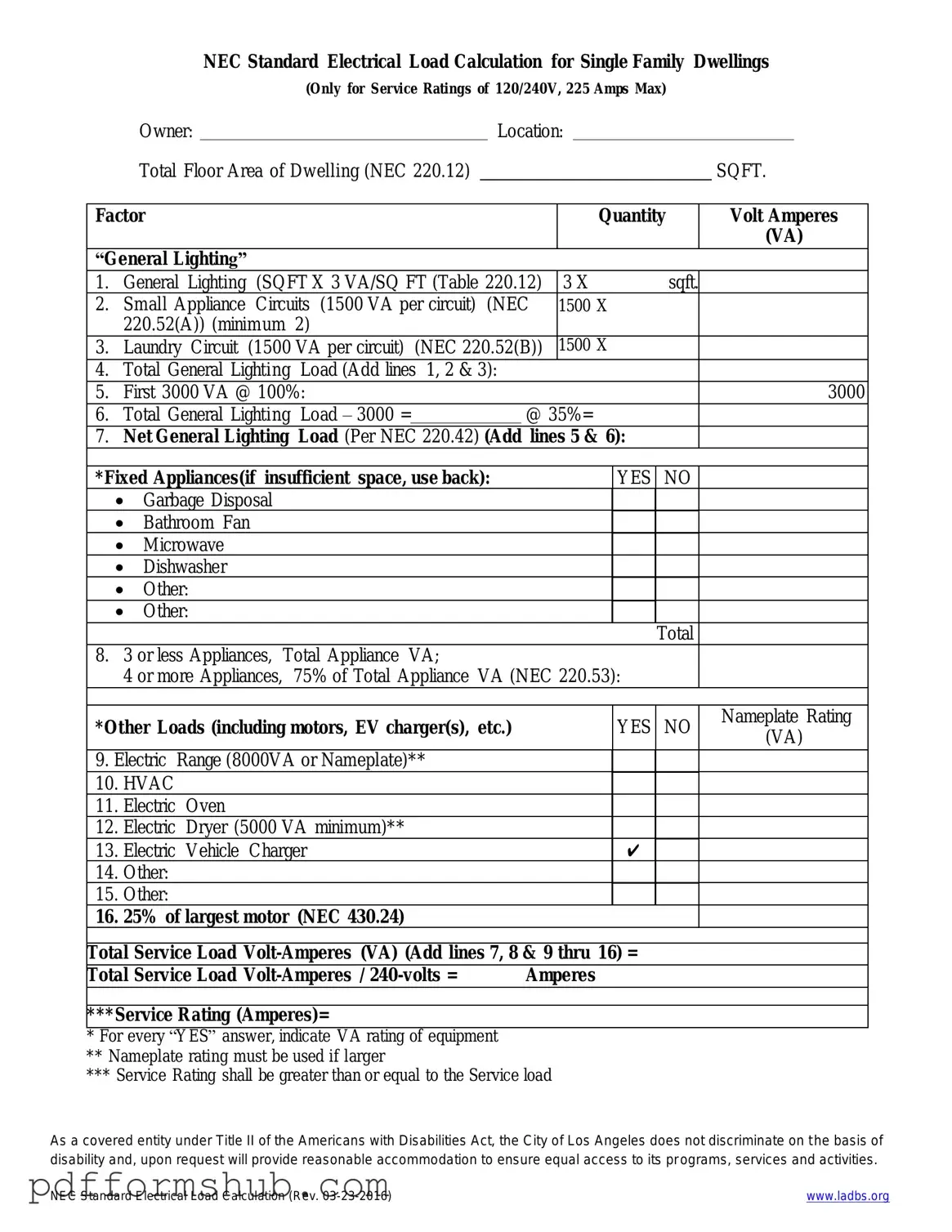The LADBS NEC Standard Electrical Load Calculation form plays a crucial role in ensuring that electrical systems within buildings are designed and installed safely and effectively. This form serves as a comprehensive tool for professionals in the construction and electrical fields, providing a structured method to assess the anticipated electrical load for various types of occupancy. By detailing essential factors such as the square footage of the space, the number of outlets, and the types of appliances and equipment to be used, the form helps in determining the appropriate size of electrical service needed. Additionally, it incorporates guidelines from the National Electrical Code (NEC), ensuring compliance with safety standards and regulations. Users of the form benefit from its clear layout, which facilitates accurate calculations and promotes consistency across different projects. Ultimately, the LADBS NEC Standard Electrical Load Calculation form is not merely a bureaucratic requirement; it is a vital component in the planning process that safeguards both the integrity of electrical installations and the safety of occupants.
